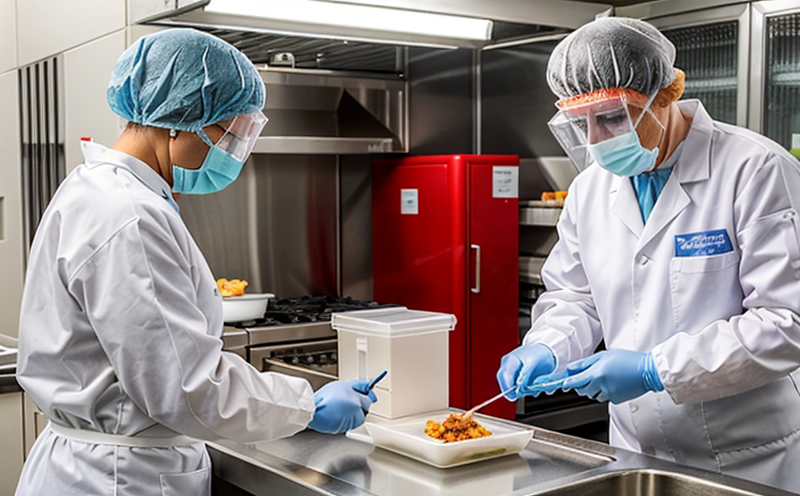ISO 18744 Detection of Cryptosporidium and Giardia in Leafy Vegetables and Fresh Produce
The ISO 18744 standard provides a comprehensive method for the detection of Cryptosporidium and Giardia in leafy vegetables and fresh produce. This service is critical as both pathogens are known to cause significant gastrointestinal illness, which can lead to economic losses through product recalls, damage to brand reputation, and increased healthcare costs.
The standard outlines a two-step approach: concentration of the sample followed by specific PCR-based detection methods. Concentration techniques such as centrifugation or filtration combined with immunomagnetic separation are used to isolate potential pathogens from leafy vegetables and fresh produce samples. The isolation step ensures that the target organisms can be detected even in low concentrations.
Once isolated, the concentration is subjected to a PCR-based assay using primers targeting regions specific to Cryptosporidium and Giardia. These pathogens are among the most challenging to detect due to their small size and rapid clearance from the environment. The PCR technique amplifies these organisms' genetic material, allowing for accurate identification down to single-cell levels.
The ISO 18744 protocol ensures high sensitivity and specificity in detecting Cryptosporidium oocysts and Giardia cysts. The assay's high sensitivity is crucial given that these pathogens can persist on produce surfaces for extended periods, even after initial contamination.
This service aligns with global food safety standards, including the Food Safety Modernization Act (FSMA) in the United States and the EU's General Food Law Regulation No. 178/2002. Adherence to ISO 18744 is essential for compliance with these regulations, which mandate the implementation of measures aimed at preventing contamination in food production.
The service includes a detailed report that specifies whether Cryptosporidium and/or Giardia are present in the tested samples. This information is vital for quality assurance teams to ensure product safety and maintain compliance with international standards.
Why Choose This Test
- The test ensures that leafy vegetables and fresh produce meet strict food safety standards.
- It detects Cryptosporidium and Giardia, two of the most common waterborne pathogens, ensuring product purity.
- The service provides comprehensive documentation required by regulatory bodies for compliance purposes.
- ISO 18744 is widely recognized in the food industry as a gold standard for pathogen detection.
- The method allows for early identification and mitigation of contamination risks.
Competitive Advantage and Market Impact
- Increase customer trust by demonstrating a commitment to high-quality, safe products.
- Differentiate your brand from competitors through advanced food safety practices.
- Safeguard against product recalls and associated financial losses.
- Promote better health outcomes for consumers, enhancing brand reputation.
Why It Matters
The detection of Cryptosporidium and Giardia in leafy vegetables and fresh produce is not merely a technical exercise; it's a critical step in ensuring food safety. Both pathogens can cause severe gastrointestinal distress, including diarrhea, nausea, vomiting, and dehydration. For vulnerable populations such as the elderly, young children, and those with compromised immune systems, these symptoms can be life-threatening.
The presence of these pathogens in leafy vegetables and fresh produce can lead to significant economic impacts. The cost of product recalls alone is staggering, often reaching millions of dollars. Additionally, the reputational damage that follows a contaminated product recall can erode consumer confidence, leading to long-term brand damage.
Compliance with ISO 18744 ensures that food producers and processors meet regulatory requirements and industry best practices. This compliance enhances market access for your products by ensuring they meet or exceed international standards. Moreover, it provides a competitive edge in the global marketplace where consumer demand for safe, high-quality produce is increasing.
The service also supports ongoing research and development efforts aimed at improving food safety protocols. By detecting these pathogens early, producers can implement targeted interventions to prevent further contamination, thereby reducing the incidence of waterborne illnesses caused by these organisms.





